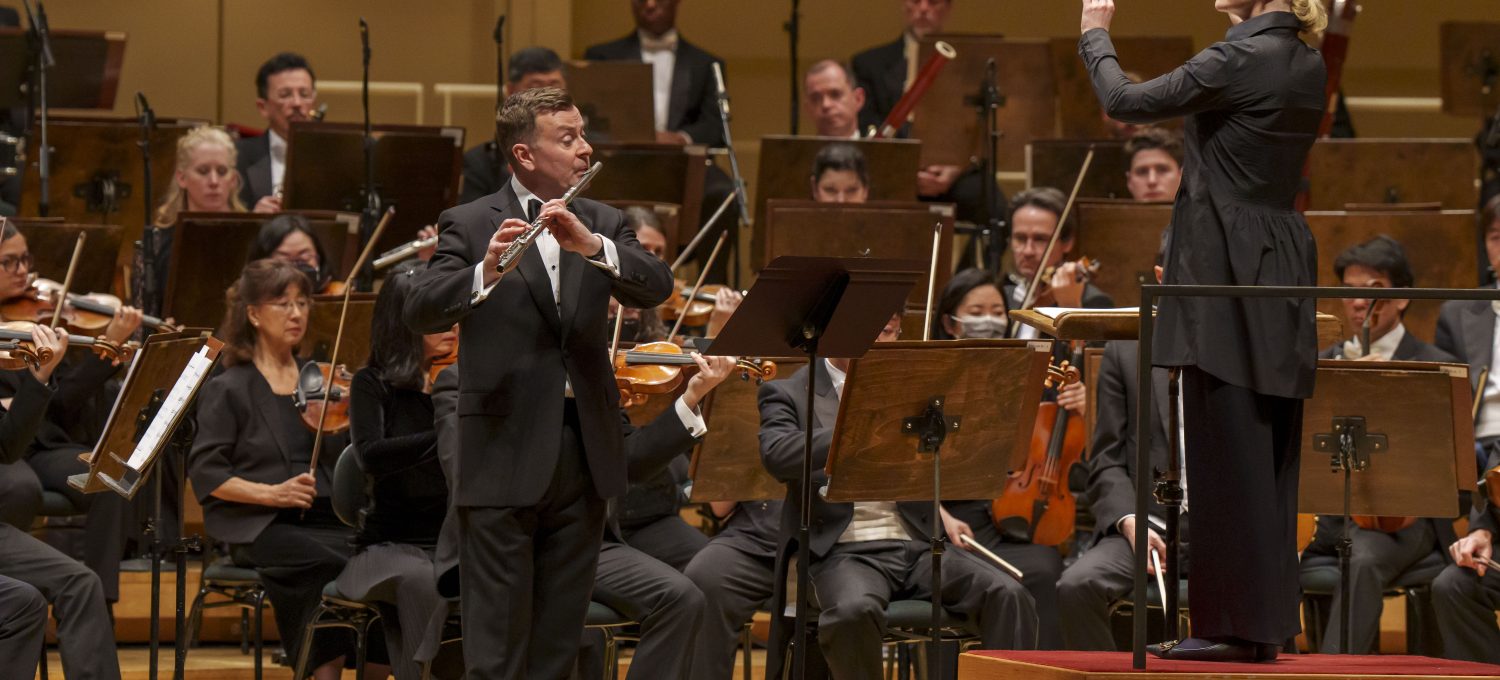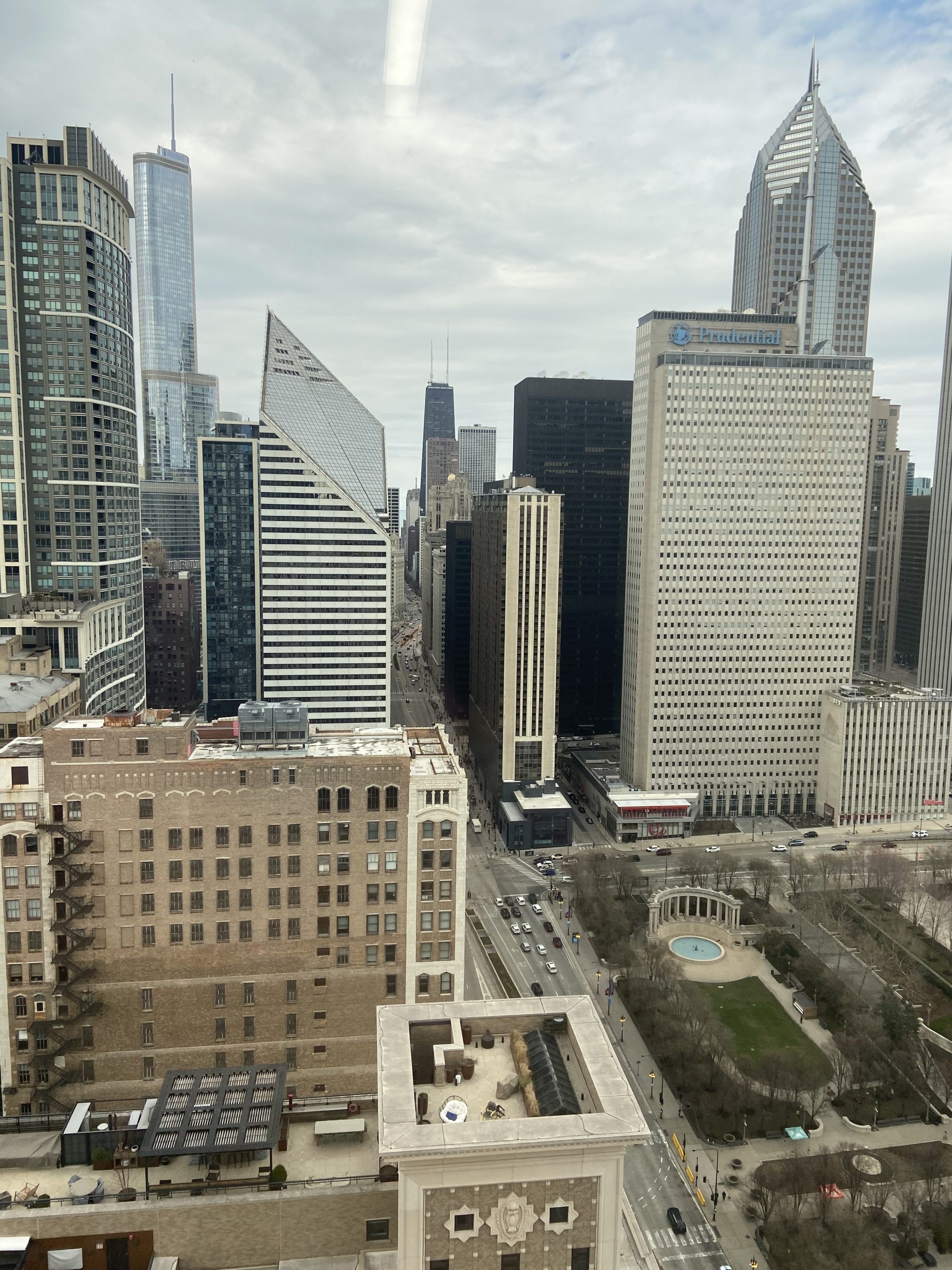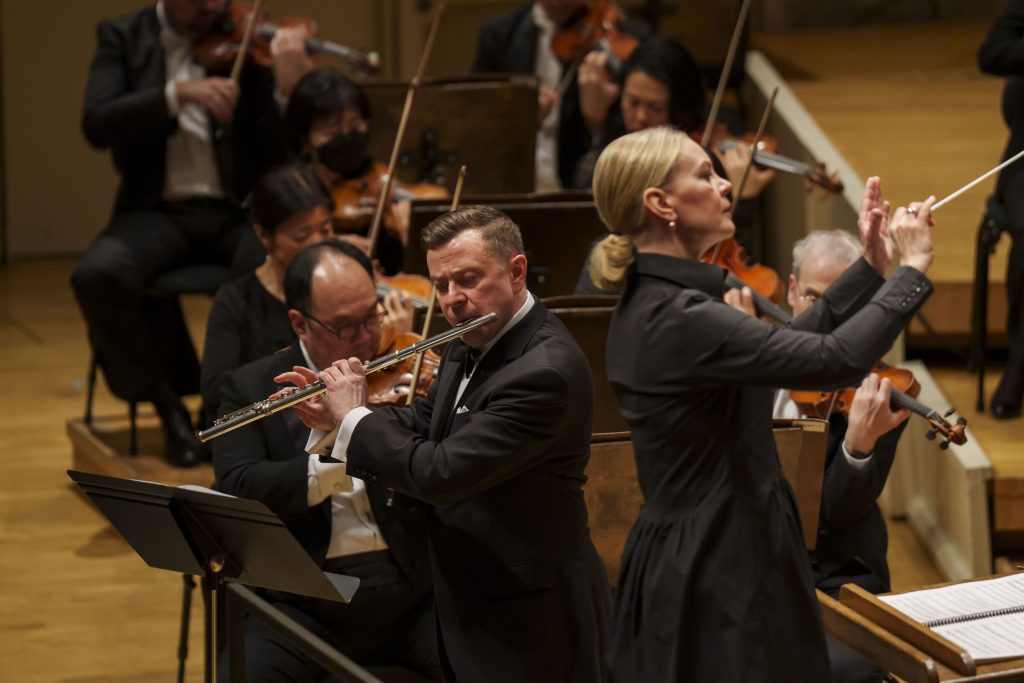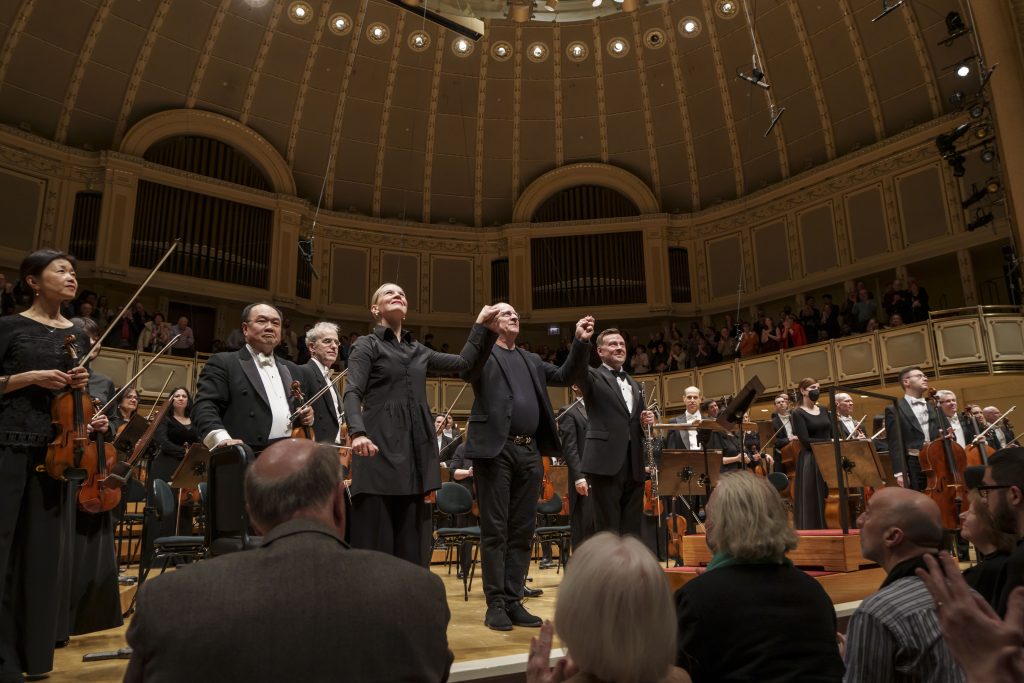The performance of Lowell Liebermann’s Flute Concerto No. 2 is one of the most eagerly anticipated events this season throughout the flute community. And the actual performance(s) have exceeded the fever pitch of expectation that has been buzzing around social networks and flute events ever since this work was commissioned and it was added to the subscription series of the Chicago Symphony Orchestra for 2023-2024.
Lowell Liebermann wrote his first piece for flute, the Flute Sonata op. 23, in 1987 for Paula Robison. There have been many more works for flute throughout the 1990s and early 2000s including the Flute Concerto no. 1 for Sir James Galway, the Piccolo Concerto for Jan Gippo, Eight Pieces for Sarah Baird Fouse, and Flute Trios no. 1 and no. 2 for the Galways. The Flute Concerto no. 2 is the first major work Mr. Liebermann has written for the flute since 2012, when Höskuldsson premiered Air for flute and orchestra at Carnegie Hall. Because of this performance, Liebermann and Höskuldsson became friends during Höskuldsson’s tenure as principal flute with the Metropolitan Opera Orchestra in New York. Quoting Liebermann in the CSO program notes, he says, “It was something of a dream for both of us that I would one day write a new concerto for Stefán, so when he called to say that the CSO would commission it, I was absolutely thrilled.”
It is fascinating to see how Liebermann’s musical language has evolved in the nearly 12 years since his last flute piece. All the characteristic elements of Liebermann’s music that flutists know and love are present in this new concerto. These include the introspective recitative-like sections, soaring lyricism and demanding balance of dynamics and breath control over the entire range of the flute through the slow sections, as well as the blistering, mind blowing virtuosity of the fast sections. When I asked Mr. Liebermann about his musical influences, he said that he felt that was difficult to say and that he is often the last one to realize what those influences have been. To my ear, the influence of John Williams has been in Liebermann’s music for a long time. What immediately comes to mind for me is the arpeggio passage in Soliloquy for solo flute in the middle of the second page. Also very clear in this new concerto is the influence of minimalist composers, particularly John Adams with the use of ostinati that shift and evolve subtly in the orchestral accompaniment, particularly supporting the lyrical sections of the piece.
One of the most illuminating comments Mr. Liebermann made about influences to Keith in the video interview for the Flute Examiner was that he has been recently listening to, performing and thinking a lot about Schubert. This is immediately apparent since the first movement of this concerto is through composed, like many Schubert songs. It starts on the bottom of the flute range with a long recitative-like passage with minimal commentary from the orchestra. The next section begins by establishing the ostinati in the strings, mallet instruments and winds. When the flute solo continues, it is with long soaring melody over these subtle ostinati. The solo flute line hands the long melodic lines with the upper strings or brass while the winds continue with the ostinati. About half way into the movement, new melodic material is introduced first in the upper strings and piccolo that becomes the basis for the rest of the movement. The solo flute responds with the introduction of the first technical fireworks of the piece, full of fast runs and arpeggios. The solo alternates between melody and runs, with the scales getting faster (larger and larger tuplets per beat) and covering more range of the flute. The movement ends with the slow melody growing out of the last flurry of runs, getting more and more quiet, higher and higher, ending on an ethereal pianissimo high B for more than two measures.
The second movement is a classic Liebermann slow movement – elegiac, introspective, meditative. Formally speaking, this movement is in ABA form, with a primarily homophonic texture accompanying the solo. The tempos are slow as only Liebermann largos can be, starting at mm=40 and pressing forward to mm=60 in the middle section before returning to mm=40. Over and over I have heard Mr. Liebermann ask us to play the tempos and the dynamics as he wrote them. It is so challenging, but always worth the effort to be faithful to the page. The movement ends with a cadenza reminiscent of the recitative section at the beginning of the concerto. This accelerates directly into the final movement.
The last movement begins at an absolutely blistering pace in sixteenth note triplets for the soloist and the primary thematic material in the low strings and in the winds. In fact, this thematic material is only ever heard in the orchestra. The figuration in the solo flute part is all the kinds of patterning we love about Liebermann’s writing for the flute including arpeggios in groups that slide up or down by steps, thirds or fourths; outlining a melody by the first note of a group; and shifting totalities. The contrasting lyric flute melody of the middle section is accompanied by shimmering ostinati from different sections of the orchestra. The piece ends with an absolute blizzard of virtuosic scales and arpeggios that go from sixteenth note triplets to thirty-second notes runs, a full range chromatic scale and culminating in repeated rapid fire arpeggios up to the final triumphant high C.
This reviewer’s take aways about Lowell Liebermann’s Flute Concerto No. 2 are that this piece is a celebration of the flute in all its colors, technical capabilities, dynamic range and virtuosic potential. I love how the concerto starts at the very bottom of the flute and ends at the very top, in fact making this journey twice, in the first movement and then again from the cadenza at the end of the second movement to the end of the third movement. It is also a personal celebration of a long and creative friendship between Lowell Liebermann and Stefán Ragnar Höskuldsson. Their mutual respect and admiration is evident throughout the piece.
The world premiere performance on Thursday evening, March 21, 2024 was a triumph in every way, for Stefán Ragnar Höskuldsson, for the Chicago Symphony Orchestra and for their guest conductor, Susanna Mälkki. Höskuldsson’s commitment to color, phrasing, and mastery of the flute is unparalleled. I have never heard any flutist play better or be better prepared than Stefán was for this weekend series. He is at the apex of his career, where I hope he will be for a long time yet to come. In this reviewer’s opinion, he is one of an extremely elite group of orchestral flutists both in the United States and internationally. The Chicago Symphony Orchestra is really fortunate to have Mr. Höskuldsson leading the wind section. The CSO members know this and really were on their “A” game for this series. The wind section deserves a special shout out for their superlative ensemble playing, balancing color and dynamics, and sheer virtuosity. They obviously really love having Mr. Höskuldsson at the head of the winds and were superlative in their support. The whole orchestra has never sounded better. Also worthy of praise was the overall leadership of Susanna Mälkki for her close collaboration with Mr. Höskuldsson and Mr. Liebermann in preparing the orchestra for this historic premiere. The mutual respect and enthusiasm among these artists in bringing this new concerto into the world contributed so much to the crowning achievement these performances have been for Chicago, the flute community and music lovers everywhere.
Dr. Cate Hummel is active as a performing artist and clinician around the U.S. and internationally. She has been a guest artist at the 2022 Festival Internacional de Flauta: Perla del Pacífico in Guayaquil, Ecuador, played the world premiere of Douglas Townsend’s Sonatina for flute and piano (lost for 40 years), played a debut recital in Weill Recital Hall at Carnegie Hall, a recital at Bruno Walter Auditorium in Lincoln Center, and on the Dame Myra Hess Series at the Chicago Cultural Center. As an artist scholar for Altus and Azumi flutes she performs and presents to universities, high schools, music dealers, flute events, educator conferences on a wide range of pedagogical topics. She is widely known for the blog, Dr. Cate’s Flute Tips, at drcatesflutetips.wordpress.com about teaching flute. Dr. Cate resides in Aurora, IL and teaches students from the Chicago area and online www.fluteline.com
Special thanks to Cate Hummel and the Chicago Symphony for photos in this article.






